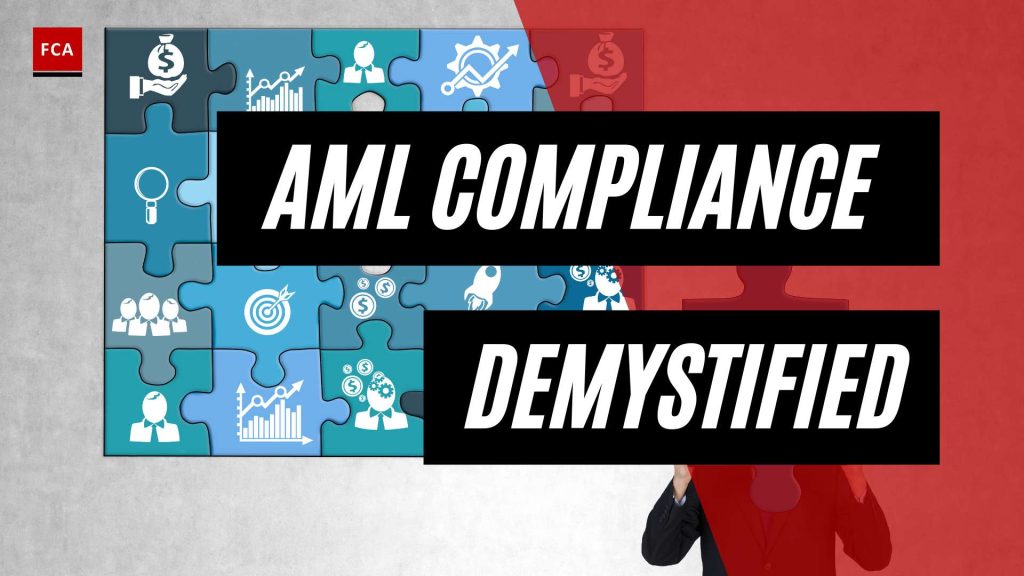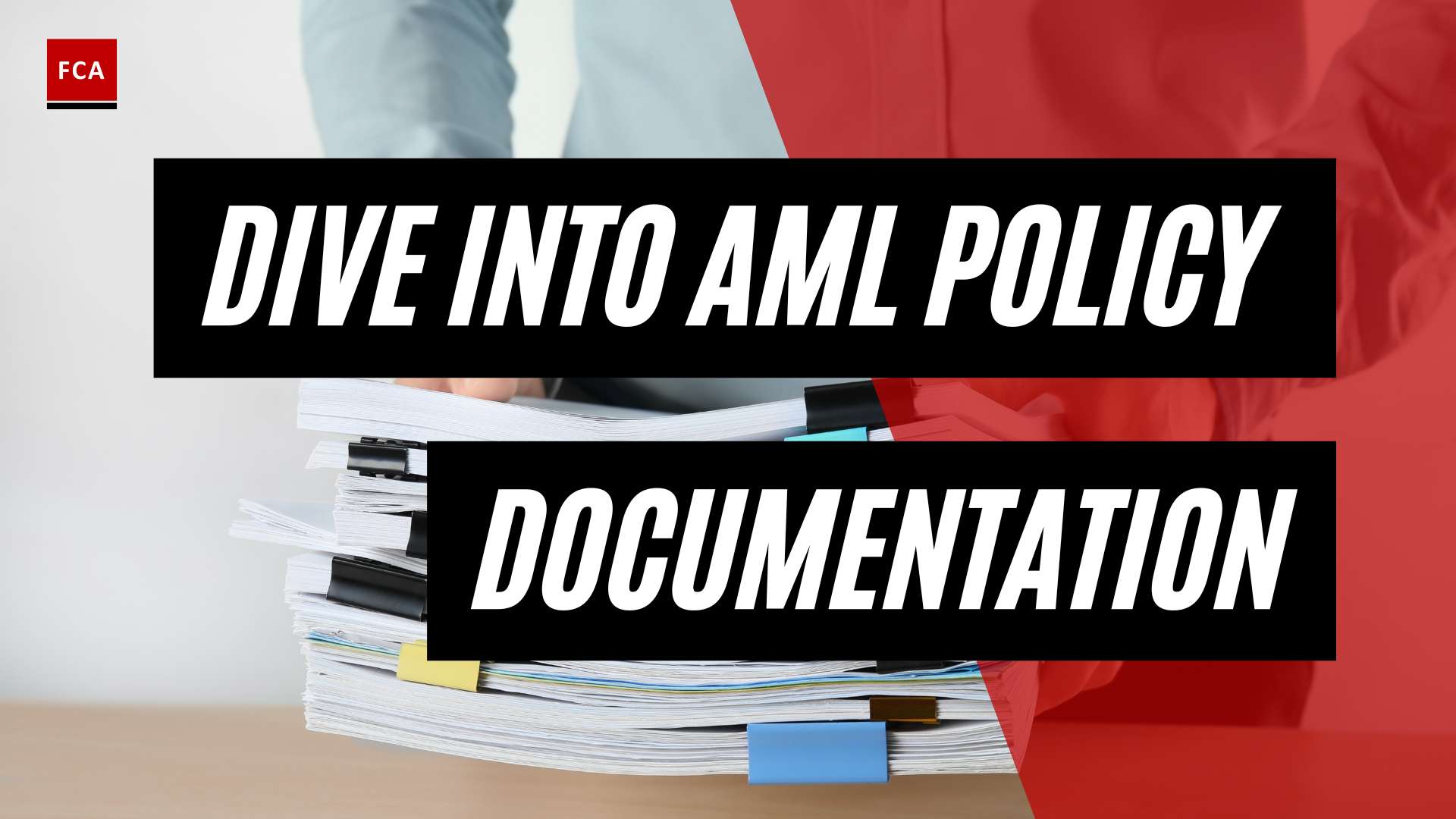Understanding AML Compliance
To ensure the integrity of financial systems and combat illicit financial activities, understanding AML (Anti-Money Laundering) compliance regulations is crucial for financial institutions and businesses. AML compliance regulations are designed to prevent money laundering and the financing of terrorist activities by imposing specific requirements on financial institutions, including customer due diligence, monitoring, and reporting of suspicious activities (GitHub Docs).
What is AML Compliance?
AML compliance refers to the measures and processes that financial institutions and businesses implement to detect, prevent, and report money laundering activities. Money laundering involves disguising the proceeds of illegal activities as legitimate funds. AML compliance regulations aim to mitigate the risks associated with money laundering by ensuring that financial institutions have robust systems in place to identify and report suspicious transactions (Investopedia).
Financial institutions must develop and maintain an AML compliance program that includes various components such as customer due diligence (CDD), transaction monitoring, and suspicious activity reporting (SAR). By adhering to these regulations, financial institutions play a crucial role in safeguarding the integrity of the global financial system.
Importance of AML Compliance
Complying with AML regulations is of paramount importance for financial institutions and businesses. Failure to comply can result in severe consequences, including financial penalties, reputational damage, and even criminal prosecution (GitHub Docs). Let’s take a closer look at the significance of AML compliance:
-
Preventing Financial Crimes: AML compliance regulations aim to prevent money laundering, terrorist financing, and other financial crimes. By implementing robust compliance measures, financial institutions contribute to global efforts in combating illicit activities.
-
Protecting the Financial System: Maintaining strict AML compliance measures is essential for safeguarding the integrity of the financial system. By detecting and reporting suspicious transactions, financial institutions help to identify potential threats and protect the system from abuse.
-
Maintaining Regulatory Compliance: AML regulations are often enforced by government agencies and regulatory bodies. By adhering to these regulations, financial institutions demonstrate their commitment to conducting business with transparency, accountability, and ethical practices.
-
Preserving Reputational Integrity: Non-compliance with AML regulations can result in significant reputational damage for financial institutions. Negative publicity and loss of customer trust can have long-lasting impacts on the institution’s reputation and business operations.
-
Avoiding Legal Consequences: Failure to comply with AML regulations can lead to financial penalties, which can be substantial. These penalties are imposed to deter non-compliance and ensure that financial institutions take their AML obligations seriously.
By understanding the importance of AML compliance and implementing comprehensive AML compliance programs, financial institutions contribute to the collective efforts of combating money laundering and protecting the integrity of the global financial system.
Key AML Compliance Regulations
To effectively combat money laundering and ensure the integrity of the financial system, several key regulations have been established globally. Understanding these AML compliance regulations is essential for professionals working in compliance, risk management, anti-money laundering, and anti-financial crime. In this section, we will explore three significant regulations: the Bank Secrecy Act (BSA), the European Union’s Anti-Money Laundering Directives, and the Financial Action Task Force (FATF) Recommendations.
Bank Secrecy Act (BSA)
The Bank Secrecy Act (BSA) of 1970 was the first legislation enacted in the United States to fight against money laundering and other financial crimes (Investopedia). The BSA requires financial institutions to establish robust compliance programs, report certain transactions, and maintain records to assist in the detection and prevention of money laundering.
Under the BSA, financial institutions are required to implement Customer Due Diligence (CDD) procedures, conduct ongoing monitoring of customer transactions, and file Suspicious Activity Reports (SARs) when necessary. The BSA also mandates the implementation of an Anti-Money Laundering (AML) compliance officer role within financial institutions to oversee and ensure compliance with the regulation.
European Union’s Anti-Money Laundering Directives
The European Union (EU) has implemented a series of Anti-Money Laundering Directives to combat money laundering and terrorist financing within its member states. The most recent directive, the EU’s 5th AML Directive, was implemented in January 2020 (Fintech Global). This directive extended AML rules to cryptocurrencies and anonymous prepaid cards, addressing potential loopholes in the existing regulatory framework and enhancing AML compliance within the financial sector.
The EU’s Anti-Money Laundering Directives require member states to establish national AML frameworks, including customer due diligence measures, suspicious transaction reporting, and the establishment of Financial Intelligence Units (FIUs). Financial institutions within the EU must comply with these directives to ensure the prevention and detection of money laundering and terrorist financing activities.
Financial Action Task Force (FATF) Recommendations
The Financial Action Task Force (FATF) is an international organization dedicated to preventing money laundering and terrorism financing. It establishes global AML compliance standards and regularly releases updated AML/CFT recommendations (Flagright). The FATF’s recommendations serve as a benchmark for countries and jurisdictions worldwide, guiding the development of their AML frameworks.
The FATF’s recommendations cover various aspects of AML compliance, including customer due diligence, reporting of suspicious transactions, international cooperation, and the regulation of virtual assets and cryptocurrencies. Financial institutions are expected to adopt and implement these recommendations to ensure effective AML compliance and contribute to the global fight against money laundering and terrorist financing.
By understanding and adhering to these key AML compliance regulations, financial institutions and professionals can play a crucial role in preventing money laundering, protecting the integrity of the financial system, and maintaining trust in the global economy. Compliance with these regulations helps to ensure that organizations have robust AML programs in place to detect, report, and mitigate the risks associated with money laundering and illicit financial activities.
Components of an AML Compliance Program
To develop a comprehensive AML compliance program, organizations need to address various components that are vital in detecting and preventing money laundering and other illicit financial activities. The key components of an effective AML compliance program include customer due diligence (CDD), transaction monitoring, and suspicious activity reporting (SAR).
Customer Due Diligence (CDD)
Customer due diligence is a crucial element of an AML compliance program. It involves the process of verifying the identity of customers and assessing the risks associated with their transactions. By conducting thorough CDD, organizations can identify and understand their customers, their business activities, and the potential risks they may pose.
CDD measures typically include obtaining customer identification documents, verifying the information provided, and assessing the customer’s risk profile. This process enables organizations to identify high-risk customers and apply enhanced due diligence measures when necessary. A comprehensive understanding of customer profiles is essential for effective risk management and compliance with AML regulations.
Transaction Monitoring
Transaction monitoring is a critical component of an AML compliance program as it helps identify suspicious activities and potential signs of money laundering. By monitoring financial transactions, organizations can detect unusual patterns, large cash transactions, structuring, or other red flags that may indicate illicit activity.
The monitoring process involves the use of automated systems that analyze transactional data in real-time. These systems compare transactions against predetermined risk-based rules and thresholds. If a transaction meets the criteria for suspicion, it triggers an investigation or further analysis by compliance professionals.
To ensure the effectiveness of transaction monitoring, organizations must establish and maintain robust monitoring systems capable of handling large volumes of data. Regular testing and calibration of the monitoring systems are also essential to optimize accuracy and minimize false positives.
Suspicious Activity Reporting (SAR)
The reporting of suspicious activities is a fundamental obligation for organizations under AML compliance regulations. When suspicious transactions are identified through customer due diligence or transaction monitoring, organizations must promptly report them to the appropriate authorities.
SARs provide law enforcement agencies with critical information that can aid in the investigation and prosecution of money laundering and other financial crimes. This cooperation between the private sector and regulators is crucial in combating illicit financial activities effectively.
Organizations must establish clear procedures and guidelines for the identification, documentation, and reporting of suspicious activities. Compliance officers play a key role in evaluating and documenting suspicious transactions, ensuring that SARs are filed in a timely and accurate manner.
By incorporating robust customer due diligence, transaction monitoring, and suspicious activity reporting into their AML compliance programs, organizations can effectively detect and prevent money laundering and other financial crimes. These components work together to create a comprehensive framework for ensuring compliance with AML regulations and protecting the integrity of the financial system.
Consequences of Non-Compliance
Ensuring AML compliance is of utmost importance for businesses and financial institutions. Failure to comply with Anti-Money Laundering (AML) regulations can result in severe consequences, including financial penalties, reputational damage, and criminal prosecution.
Financial Penalties
Non-compliance with AML regulations can lead to substantial financial penalties. Regulatory authorities around the world have been imposing hefty fines on organizations found to be in violation. For instance, the European Union’s General Data Protection Regulation (GDPR) enables fines of up to 4% of a company’s global turnover or €20 million, whichever is greater, for non-compliance (Financial Crime Academy). In the United States, the Department of Justice has imposed fines ranging from $1 million to over $1 billion for AML non-compliance. Globally, regulatory actions related to AML violations have resulted in fines totaling tens of billions of dollars.
Reputational Damage
Non-compliance with AML regulations can have a detrimental impact on a company’s reputation. News of violations can quickly spread, eroding trust and confidence in the organization. Customers, investors, and stakeholders may lose faith in the company’s ability to conduct business ethically and securely. Reputational damage can lead to a decline in customer acquisition, increased customer churn, and difficulties in attracting new business relationships.
Criminal Prosecution
In addition to financial penalties, non-compliance with AML regulations can result in criminal prosecution. Authorities may pursue legal action against individuals or entities involved in money laundering activities or those who have knowingly neglected their AML obligations. Criminal prosecution can lead to severe consequences, including imprisonment and the closure of the business.
It is essential for organizations to prioritize AML compliance to mitigate the risks associated with non-compliance. Implementing robust AML policies and procedures, conducting regular risk assessments, and providing comprehensive training programs are crucial steps towards achieving compliance. By adhering to AML regulations, organizations can protect themselves from the severe consequences that non-compliance can bring.
For further guidance on developing an effective AML compliance program, refer to our article on AML compliance program.
AML Compliance Software and Tools
To effectively manage Anti-Money Laundering (AML) compliance and mitigate the risks associated with financial crimes, organizations can leverage various software and tools. These resources help streamline compliance efforts and enhance the effectiveness of AML programs. In this section, we will explore some notable AML compliance software and tools, including GitHub’s AML compliance features, compliance tools for financial institutions, and the benefits of implementing AML compliance software.
GitHub’s AML Compliance Features
GitHub, a widely used development platform, offers AML compliance features that can be integrated directly into your workflow. These features are built into the tool, enabling the detection of sensitive information and compliance issues early in the development process. By leveraging GitHub’s code scanning feature, developers can prevent sensitive information, such as AML data, from being exposed in their code, helping companies comply with regulations and ensuring data security.
GitHub’s AML compliance features not only enhance regulatory adherence but also contribute to a more secure development environment. Automated scans for potential violations within code aid in identifying vulnerabilities and data leaks proactively, enabling organizations to address any issues swiftly and ensure compliance (GitHub Docs). By utilizing GitHub’s scanning capabilities, companies subject to AML compliance regulations can minimize the risk of financial penalties and reputational damage by staying ahead of compliance requirements.
Compliance Tools for Financial Institutions
Financial institutions often rely on specialized compliance tools to manage their AML obligations effectively. These tools assist in various aspects of AML compliance, including data analysis, risk assessment, transaction monitoring, and suspicious activity reporting. Compliance tools help automate compliance workflows, making it easier to identify and investigate potential money laundering activities. They also enable organizations to create audit trails, generate reports, and maintain comprehensive records for regulatory purposes.
AML compliance software varies in complexity and functionality, ranging from standalone systems to integrated solutions that offer additional features such as watchlist screening, identity verification, and case management. These tools aid in streamlining compliance processes, enhancing efficiency, and ensuring consistent adherence to AML regulations.
Benefits of Implementing AML Compliance Software
Implementing AML compliance software offers several benefits for organizations striving to meet regulatory requirements. Some key advantages include:
-
Efficiency and Accuracy: AML compliance software automates manual processes, reducing the risk of human error and enhancing the accuracy and consistency of compliance efforts. It streamlines data collection, analysis, and reporting, enabling organizations to identify and address potential risks efficiently.
-
Enhanced Risk Management: AML compliance software provides robust risk assessment and monitoring capabilities. By leveraging advanced analytics and machine learning algorithms, these tools can identify patterns, anomalies, and suspicious activities more effectively, enabling organizations to mitigate risks promptly.
-
Regulatory Adherence: AML compliance software helps organizations stay up to date with evolving regulations by incorporating rule-based frameworks. These frameworks assist in ensuring compliance with specific AML regulations, such as the Bank Secrecy Act (BSA) and the European Union’s Anti-Money Laundering Directives.
-
Audit and Reporting: AML compliance software enables organizations to generate comprehensive reports, maintain audit trails, and demonstrate compliance to regulators. These tools facilitate the documentation of compliance activities, making it easier to respond to regulatory inquiries and audits.
By utilizing AML compliance software and tools, organizations can enhance their AML compliance programs, improve risk management practices, and meet regulatory requirements more effectively. However, it’s important to carefully assess the specific needs of your organization and select software that aligns with your compliance objectives and regulatory obligations.
International AML Compliance Regulations
Anti-Money Laundering (AML) compliance regulations are crucial in the fight against financial crimes and money laundering. Various countries and international organizations have implemented specific regulations to combat these illicit activities. In this section, we will explore AML regulations in the United States, Canada, and the global efforts to combat money laundering.
AML Regulations in the United States
The United States has been at the forefront of implementing AML regulations. The Bank Secrecy Act (BSA) of 1970 was the first legislation enacted in the country to fight against money laundering and other financial crimes (Investopedia). It requires financial institutions to establish AML programs that include the development of internal policies, procedures, and controls, the designation of a compliance officer, an ongoing employee training program, and an independent audit function to test programs (Investopedia).
In addition to the BSA, the USA PATRIOT Act of 2001 expanded AML regulations further. It introduced stringent requirements for financial institutions to prevent money laundering and terrorist financing. These requirements include enhanced customer due diligence, suspicious activity reporting, and the establishment of robust AML programs.
AML Regulations in Canada
Canada also places significant emphasis on AML compliance. The Government of Canada continually works to enhance its anti-money laundering and anti-terrorist financing (AML/ATF) regime to address emerging risks. Financial institutions in Canada are subject to regulations that require them to implement robust AML programs, conduct customer due diligence, and report suspicious transactions. These regulations aim to ensure the integrity and security of the financial system in Canada.
Global Efforts to Combat Money Laundering
Global collaboration is essential in the fight against money laundering. The Financial Action Task Force (FATF) is an international organization dedicated to preventing money laundering and terrorism financing. It establishes global AML compliance standards and regularly releases updated AML/CFT recommendations. With 37 member jurisdictions and two regional organizations representing major financial centers worldwide, the FATF plays a pivotal role in setting the international standards for AML compliance (Flagright).
The European Union has also made significant contributions to combating money laundering. It has issued several Anti-Money Laundering Directives, including the Fifth Anti-Money Laundering Directive (5AMLD) and the Sixth Anti-Money Laundering Directive (6AMLD). These directives aim to prevent money laundering and terrorist financing worldwide, contributing to the integrity and growth of the financial system.
By implementing robust AML compliance regulations at both national and international levels, countries and organizations work together to protect the global financial system from the risks posed by money laundering and illicit financial activities. These regulations ensure that financial institutions adhere to stringent standards, conduct proper due diligence, and report suspicious activities, ultimately strengthening the integrity of the global financial landscape.
Enhancing AML Compliance Programs
To strengthen AML compliance programs and effectively combat money laundering, financial institutions must focus on key areas such as risk assessments and controls, the role of compliance officers, and collaboration with regulators and public-private partnerships.
Risk Assessments and Controls
A crucial step in enhancing AML compliance programs is conducting thorough AML risk assessments to identify and understand the specific money laundering risks faced by the institution. This involves assessing customer profiles, transaction patterns, geographic risks, and other relevant factors. By understanding the risks, institutions can develop tailored controls and procedures to mitigate those risks effectively.
Implementing robust controls is vital to prevent money laundering activities. These controls may include transaction monitoring systems, customer due diligence procedures, and enhanced record-keeping practices. Regular reviews and updates of these controls are essential to adapt to evolving risks and regulatory requirements. By continuously evaluating and refining controls, institutions can maintain a proactive approach to AML compliance.
Role of Compliance Officers
Compliance officers play a pivotal role in overseeing and ensuring the effectiveness of AML compliance programs. They are responsible for implementing policies, procedures, and controls that align with regulatory requirements and industry best practices. Compliance officers also conduct ongoing monitoring and testing to identify potential gaps or weaknesses in the AML framework.
In addition, compliance officers are responsible for conducting AML training programs for employees to raise awareness and promote a strong compliance culture within the institution. By staying up-to-date with evolving AML regulations and industry trends, compliance officers can provide valuable guidance and support to the institution and its employees.
Collaboration with Regulators and Public-Private Partnerships
Collaboration with regulators and engaging in public-private partnerships are essential components of an effective AML compliance program. Financial institutions should actively engage with regulatory bodies to stay informed about changes in AML regulations and expectations. This collaboration helps institutions align their compliance efforts with regulatory requirements, ensuring they remain in good standing.
Public-private partnerships allow financial institutions to collaborate with other stakeholders, such as law enforcement agencies, industry associations, and technology providers. Such partnerships facilitate the sharing of information, insights, and best practices to enhance the effectiveness of AML compliance efforts. By working together, institutions can leverage collective knowledge and resources to combat money laundering more effectively.
By focusing on risk assessments and controls, empowering compliance officers, and fostering collaboration with regulators and public-private partnerships, financial institutions can enhance their AML compliance programs. This proactive approach is crucial in mitigating money laundering risks, protecting the integrity of the financial system, and maintaining public trust. With the support of robust AML compliance software and adherence to AML policies and procedures, institutions can stay ahead of evolving financial crimes and fulfill their regulatory obligations.









